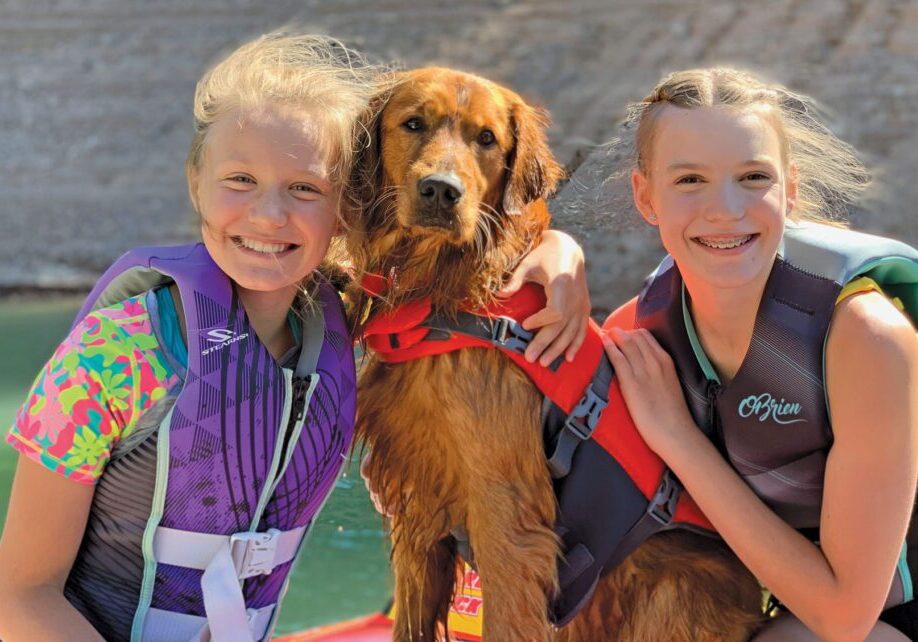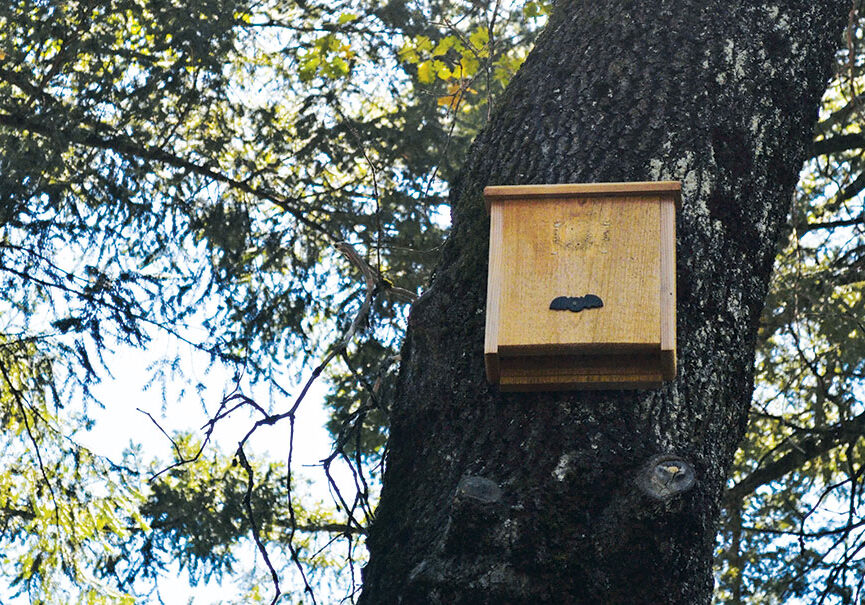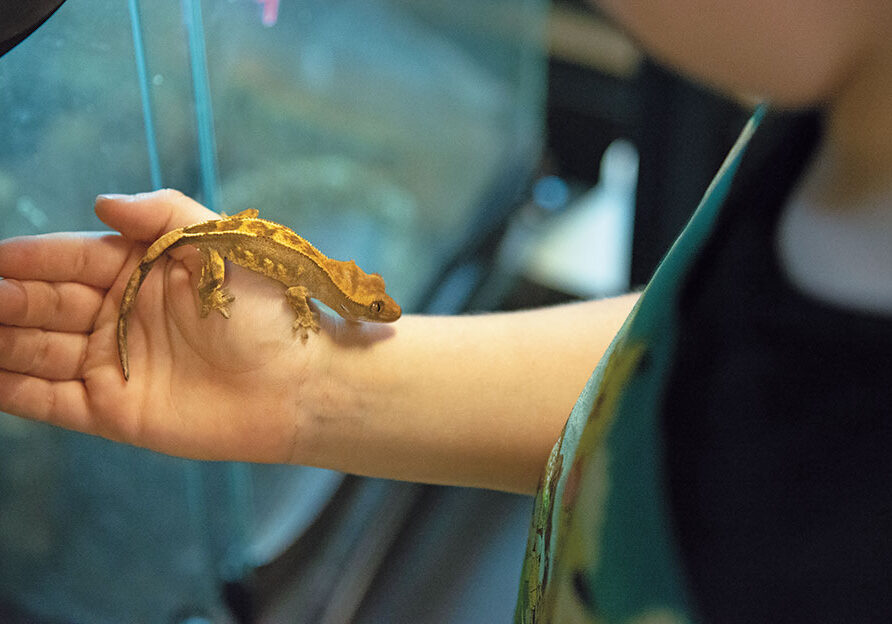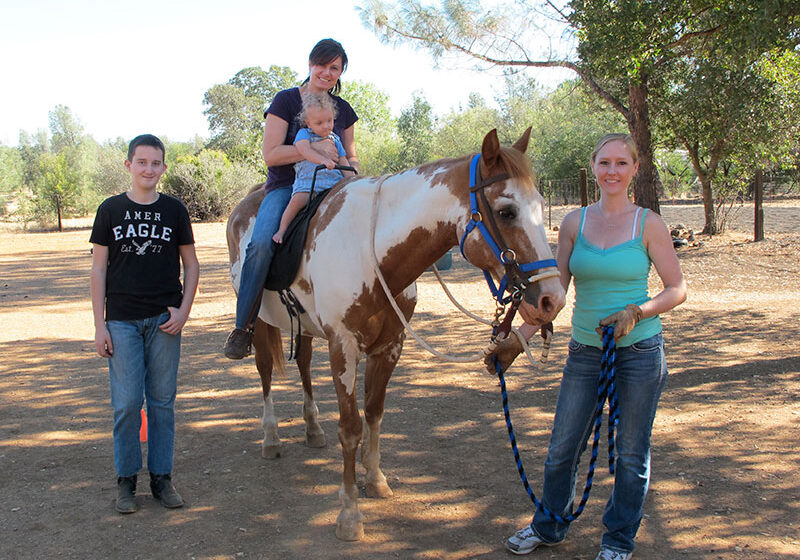Your child begins shrieking and clutches tightly at your leg, trying desperately to climb up your body. As you pick him up, you look around for clues to his behavior. That’s when you spot the little Yorkie coming down the sidewalk. The owner, seeing your child’s tears, halts a few feet away and gives you a sympathetic grin. “Would he like to pet her?” she asks. You feel your child’s arms tighten around your neck and wonder what to do to help him.
Many children are paralyzed by a fear of dogs, and with over 77.5 million dogs in American households, it’s one kids face often. The fear of dogs, or cynophobia, in official terms, is what is called a “specific phobia.” According to a study done by the University of Texas at Austin’s Department of Psychology, the fear of animals, dogs in particular, is one of the most common specific phobias. If your child has this fear, he’s not alone. And there is hope. Here are some tips from experts and other moms on how to help your child:
Offer gradual exposure
Give your child opportunities to observe dogs from a distance. Harrison Forbes, host of the radio show Pet Talk, suggests watching TV shows where pets do funny things, such as “America’s Funniest Home Videos.” This lets your child see that dogs can be enjoyable. Forbes also encourages parents to find a local agility club where kids can enjoy watching dogs perform from the safety of viewing stands (or at first, from your car).
Dr. Frank Sileo, a licensed psychologist from New Jersey, also recommends visits to pet shops where dogs are in crates, or watching dogs from the outside of a dog park. He recommends parents expose children to dogs in safe environments. “Dogs should be on leashes and with their owners.”
Look for gentle dogs
Not all dogs are equal. Some dogs have a more suspicious nature and key in quickly to negative vibes from kids. Other dogs can be more active and therefore scarier for fearful kids. With a milder, more passive dog, your child stands a better chance of finding success. Dr. Sileo says, “Take your child to a friend or neighbor that has a friendly, small (non-hyper) dog that displays good behavior with children. Make frequent visits to help your child adjust and build confidence and comfort.”
North Carolina psychologist and dog lover, Susan Orenstein, looked for a calmer dog to adopt in light of her son Sam’s fears. Says Orenstein, “the dog was actually more afraid of us than we were of her… I think Sam felt a lot of compassion and concern for her.” Helping their dog adapt to family life transformed Sam’s fears into enjoyment.
Another way to bring your child in contact with a gentler dog, according to Forbes, could involve finding someone with a therapy dog and accompanying them on rounds. Or visit your local library’s canine reading program. Seeing the positive responses these special dogs generate can help shift kids’ mindsets.
Take it easy out in public
Coming across a dog while out in public can be a stressful situation for a phobic child. In such instances parents ought to play an active role in helping their child. “Whenever these situations occur, remind your child of your job as a parent to keep them safe at all times,” says Dr. Sileo.
Forbes also suggests making every effort not to give off any fearful cues to the dog. “Keep casually walking and have your child engage in conversation and not pay attention to the dog. This throws off the dog’s radar.” He explains that freezing up sends off the wrong signals and even slow movement works better than tensing up in one spot.
When the situation has passed, talk about how it went. Let your child see he can navigate encounters with dogs without incident. Discuss what you will do the next time you see a dog and help him envision having future successes.
Make visits to dog homes more social
Illinois mom Suzanne Tucker’s daughter, Ella, is afraid of dogs. But having family members with pets necessitates occasional contact. To make these visits more pleasant, Tucker found a solution for Ella in allowing her to “go to the pet store to pick out treats for the dogs at holidays and birthdays. She does like to give dogs presents and at times, she will hand the dog a treat, as long as the dog is behind a gate.”
Overcoming a fear of dogs doesn’t happen in a day. But with planning, parental support, and positive experiences, kids can learn to appreciate (and even befriend) their canine neighbors.
Child and Dog Do’s & Don’ts
What kid doesn’t want a dog? They’re cuddly, loyal and fun to play with – except when they’re not. And to some kids, that’s all the time. While not every family needs to get a dog for a pet, every child deserves to live without a fear of dogs. Getting over that fear can be tricky, but there are things parents can do to help.
Do
- Do let your child set the pace.
- Do praise your child for positive interactions.
- Do keep working with your child to overcome fear. As Forbes says, “Childhood fears can be scarring. Parents need to do kids a favor and help them get over the fear.”
Don’t
- Don’t force interactions. This puts pressure on both the child and dog and makes success less likely.
- Don’t put your child down or dismiss their feelings of fear, says Dr. Sileo.
- Don’t leave younger children alone with dogs, even the family pet. Forbes points out that parents can think they’ve trained their kids (and dogs) to interact respectfully, but it’s not worth the risk of something regrettable happening.
Posted in: Animals
Comment Policy: All viewpoints are welcome, but comments should remain relevant. Personal attacks, profanity, and aggressive behavior are not allowed. No spam, advertising, or promoting of products/services. Please, only use your real name and limit the amount of links submitted in your comment.
You Might Also Like...

A Friend for Life – Is a Dog right for your Family?
Wrigley is a Goldendoodle who was born in a puppy mill and sent to a pet store. A family came into the store just before the holidays to ooh and […]

The Marvelous Misunderstood Bat
What hangs upside down, loves mosquitoes and sleeps all day? A bat, of course! Bats have been both revered and feared, by ancient and modern folk alike. They have carried […]

Choosing The Best Pet For Your Family
They’re cute and they can be cuddly, but how do you know what kind of pet would work best for your family? When deciding on the right pet for you, […]

Is it Time to Add a Pet to the Family?
Are you thinking of adding a four-legged, furry friend to the family? Adding a new member to the family is fun and exciting but it can also be stressful and […]




